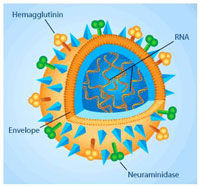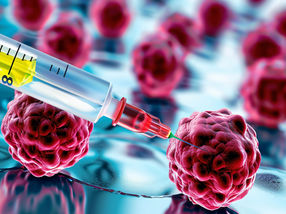Kosan initiates phase II clinical trial of KOS-953 in combination with Herceptin
Kosan Biosciences Incorporated announced the initiation of a Phase II clinical trial in patients with HER2-positive metastatic breast cancer, administering KOS-953 in combination with trastuzumab (Herceptin®). In addition, interim data from the Phase Ib dose-escalating clinical trial using this combination was presented. KOS-953 is the Company's proprietary formulation of the heat shock protein 90 (Hsp90) inhibitor, 17-AAG.
The Phase Ib dose-escalating and Phase II clinical trials of KOS-953 in combination with trastuzumab are being conducted at Memorial Sloan-Kettering Cancer Center and Arizona Cancer Center. The Phase II trial will enroll patients with HER2-positive metastatic breast cancer whose disease has progressed following treatment with trastuzumab in either the adjuvant or metastatic setting. In this Phase II trial, patients will receive weekly doses of KOS-953 following the infusion of trastuzumab. The primary objective of the protocol is to assess tumor response using standard RECIST criteria.
The Phase Ib clinical trial was designed to determine the recommended Phase II dose and toxicity of KOS-953 in combination with standard doses of trastuzumab. According to the trial protocol, patients received standard weekly doses of trastuzumab followed by KOS-953 in escalating doses. Ten patients received the final recommended Phase II dose of KOS-953. Drug-related toxicities were primarily fatigue and gastrointestinal (nausea, vomiting, diarrhea) that were amenable to supportive care. There was no marrow suppression and minimal hepatoxicity. No cardiovascular toxicity was observed. Pharmacokinetic parameters for KOS-953 in this combination were similar to KOS-953 administered as a single agent; KOS-953 had no effect on the kinetics of trastuzumab.
KOS-953 is a proprietary formulation of 17-AAG - an analog of the polyketide geldanamycin that inhibits Hsp90 (heat shock protein 90). Found in high levels in tumor cells, Hsp90 is a molecular "chaperone" which maintains the stability of numerous "client proteins" implicated in tumor growth and metastasis, including protein kinases and transcription factors. By blocking the activity of Hsp90, Kosan's geldanamycin analogs lead to the disruption of the Hsp90-client protein complexes and the degradation of the client proteins. One of the most sensitive client proteins is the HER2 receptor. By targeting multiple growth-signaling pathways involved in cancer, these compounds may have potential use in a variety of tumor types, both as single agents and in combination with other signal transduction inhibitors and cytotoxic drugs.
Most read news
Topics
Organizations
Other news from the department research and development

Get the life science industry in your inbox
From now on, don't miss a thing: Our newsletter for biotechnology, pharma and life sciences brings you up to date every Tuesday and Thursday. The latest industry news, product highlights and innovations - compact and easy to understand in your inbox. Researched by us so you don't have to.






















































